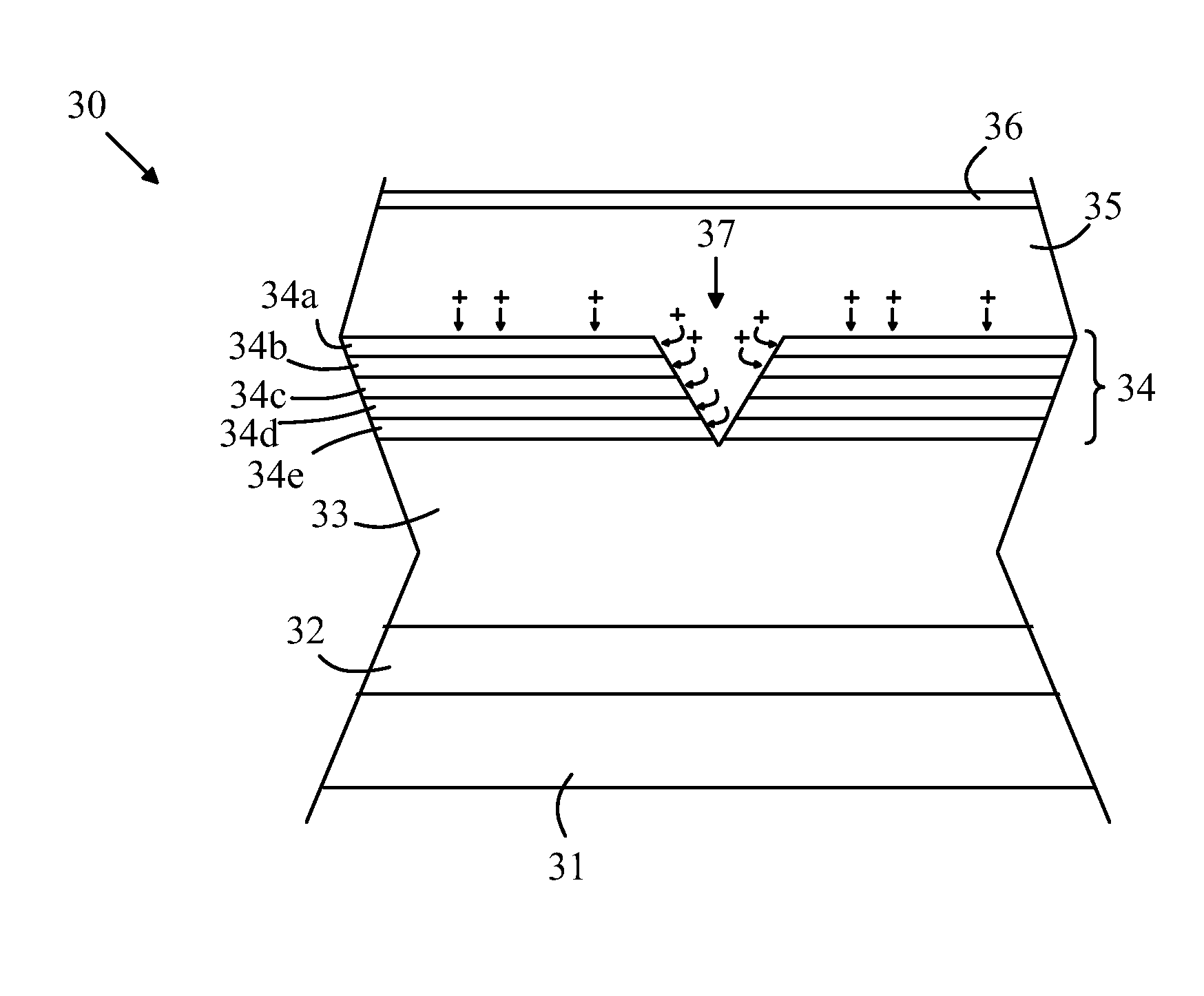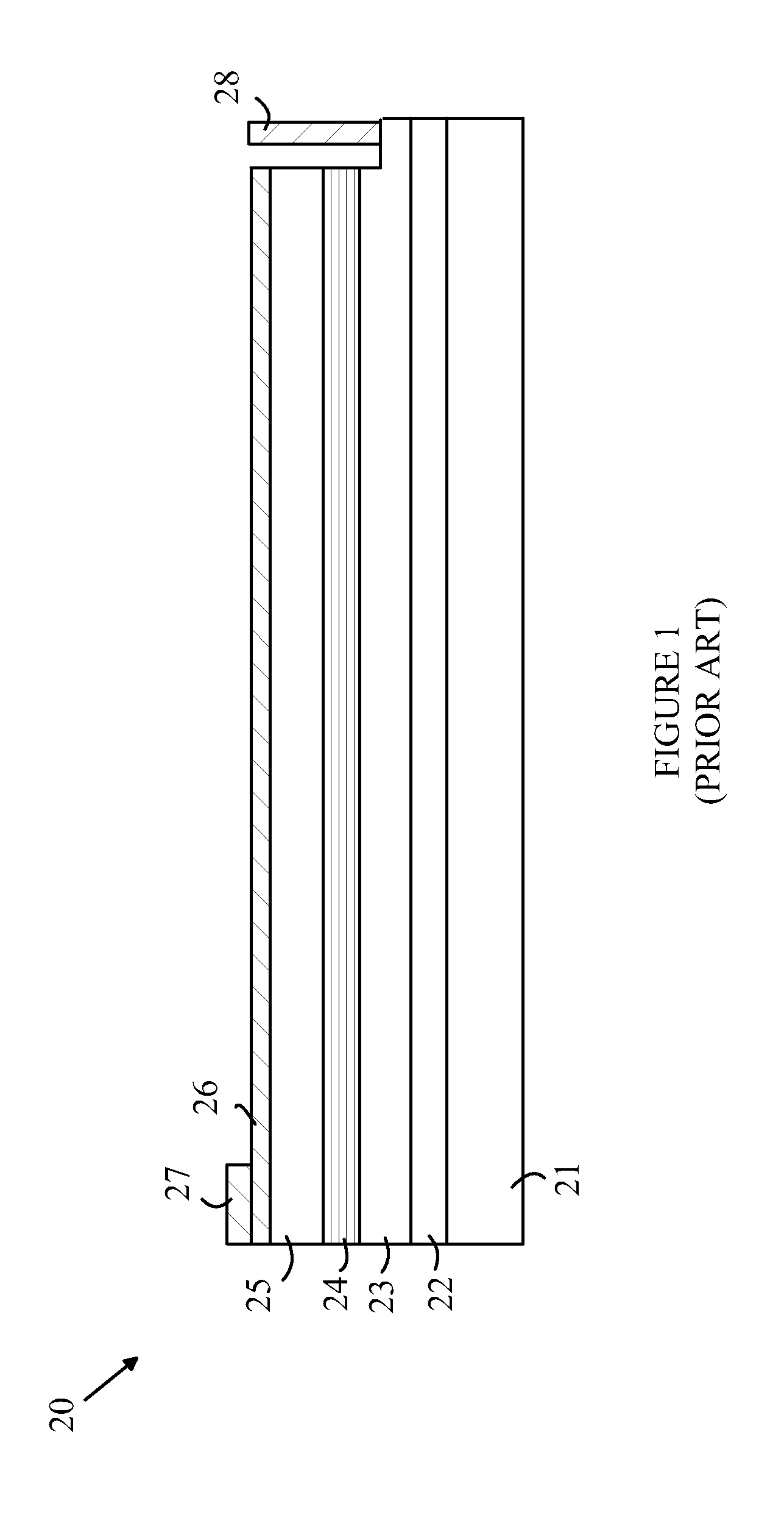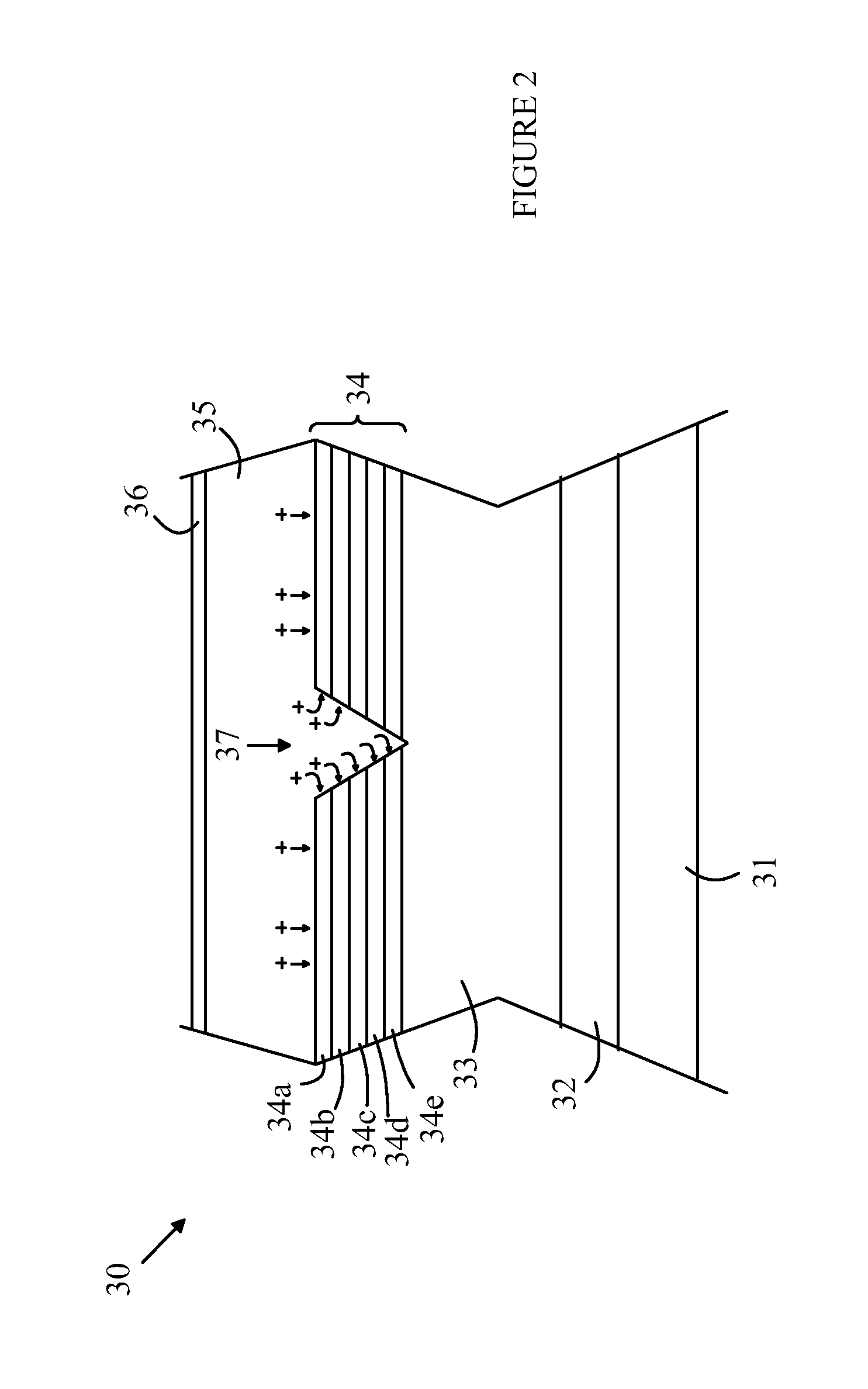LED with Improved Injection Efficiency
a technology of injection efficiency and leds, applied in the direction of bulk negative resistance effect devices, electrical equipment, semiconductor devices, etc., can solve the problems of increasing the cost of light sources, increasing the cost of leds, and limiting the power level at which leds opera
- Summary
- Abstract
- Description
- Claims
- Application Information
AI Technical Summary
Benefits of technology
Problems solved by technology
Method used
Image
Examples
Embodiment Construction
[0019]The manner in which the present invention provides its advantages can be more easily understood with reference to FIG. 1, which is a cross-sectional view of a prior art LED. LED 20 is fabricated on a substrate 21 by depositing a number of layers on the substrate in an epitaxial growth chamber. Typically, a buffer layer 22 is deposited first to compensate for differences in the lattice constants between the lattice constant of the substrate and that of the material system making up the LED layers. For GaN-based LEDs, the substrate is typically sapphire. After buffer layer 22 is deposited, an n-type layer 23 is deposited followed by an active layer 24 and a p-type layer 25. The p-type layer is typically covered by a current spreading layer 26 in GaN LEDs to improve the current distribution through the p-type layer, which has a high resistivity. The device is powered by applying a voltage between contacts 27 and 28.
[0020]The active layer is typically constructed from a number of ...
PUM
 Login to View More
Login to View More Abstract
Description
Claims
Application Information
 Login to View More
Login to View More - R&D
- Intellectual Property
- Life Sciences
- Materials
- Tech Scout
- Unparalleled Data Quality
- Higher Quality Content
- 60% Fewer Hallucinations
Browse by: Latest US Patents, China's latest patents, Technical Efficacy Thesaurus, Application Domain, Technology Topic, Popular Technical Reports.
© 2025 PatSnap. All rights reserved.Legal|Privacy policy|Modern Slavery Act Transparency Statement|Sitemap|About US| Contact US: help@patsnap.com



